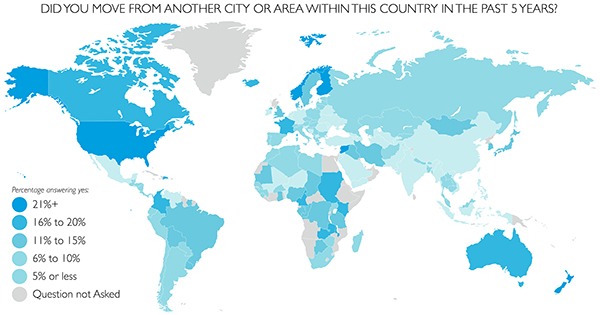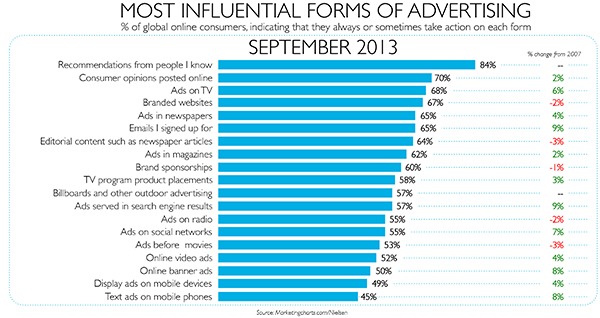For many full-service hotels, hotel food and beverage sales can be a challenge. Filling the seats of an in-house restaurant or bar can be difficult if a hotel is solely dependent on its overnight guests. Out-of-town guests might make up the majority of your breakfast diners, but by lunch, guests are out the door to take in the local color. It could be could your hotel isn’t doing enough neighborhood marketing.
We’re incredibly saddened by the idea of hotels resigning themselves to less than impressive hotel food and beverage profits because they can’t fill their dining rooms — especially when a vital customer base is quite literally sitting outside the front door: local guests.
With 80 percent of your customers coming from less than 10 minutes away, what are you for your with hotel food and beverage marketing to reach the other 20 percent? The goal is to convince those who eat locally that yours is the best restaurant. And an ad in the local newspaper is not going to cut it.
What Do We Mean by Neighborhood Marketing?
Neighborhood marketing (also known as guerrilla marketing and local store marketing) is a campaign specifically geared toward members of the local community. It’s a method that’s been around for decades, but it’s also an idea with staying power. The tactics are more personalized (and often dramatically less expensive) than traditional — dare we say dated — mass marketing methods like newspapers, TV, billboards, and radio.
The most successful neighborhood marketing campaigns take a holistic approach to bringing in guests. It’s much easier to establish your hotel’s restaurant as a pillar of the community if the food is excellent and the staff is enthusiastic, so that’s an assumed baseline. The goal of neighborhood marketing is to build a reputation in the community — a strategy that relies heavily on face-to-face interactions and nontraditional publicity. And it pays off: 52 percent of guests prefer to dine at restaurants that are active members of the community.
Why is Neighborhood Marketing an Effective Strategy?
1. IT’S LESS EXPENSIVE
Last year, advertisers spent $225 to reach each TV viewer (compared to $144 per person for online marketing), despite the fact that the number of people watching TV has, in the U.S., remained virtually stagnant since 2011. Traditional print media has faired worse: today, only 23 percent of Americans actually reads a daily newspaper. Global Internet traffic, on the other hand, has increased 400 percent in the last five years. By 2017, the current 2.7 billion users is expected to triple.
More importantly, more people are searching the Internet from mobile devices. Last year, smartphones overtook laptops as the top generator for Internet traffic. By 2017, experts forecast smartphones will account for 68 percent of Internet traffic, compared to the laptop’s 14 percent. That’s fantastic for restaurants since 88 percent of customers who search for a local business on their phones end up calling or stopping by in person within a day.
If that’s not enough to convince you that the Internet is way more effective for marketing your hotel food and beverage than TV, consider these statistics:
- People spend 20 percent more time on their cell phones than they do watching TV, and 80 percent of smartphone owners use their mobile device while watching TV.
- Thirty-four percent of smartphone users (56 percent of the world’s population) list their phone as their primary method for accessing the Internet, and you should expect that number to grow. Forty-five percent of people ages 18 to 29 use their smartphone’s Internet more than their desktop’s.
- In 2013, people spent 18 percent of their time on a cell phone browsing the Internet. Today, mobile-based searches make up one quarter of all Internet queries.
- When using smartphones, more people are searching local — one in three, compared to one in five on a desktop.
- After seeing an ad on their mobile devices, 52 percent of people actually stop by the store.
2. NO ONE IS FAST- FORWARDING
While Americans might spend an average of 34 hours each week watching TV, seven out of 10 households are using a DVR and fast-forwarding through commercials, cutting their TV time by nearly 20 percent.
3. NEIGHBORHOOD MARKETING
They get people talking because they’re promoting hotel food and beverage in unexpected ways. And we all know how important word-of-mouth marketing is: 48.9 percent of diners say that a referral from a friend has the most influence in their dining decisions. That said, after they get a restaurant recommendation, 80 percent of people will hop online to do a bit more research, with review websites like Yelp and a restaurant’s website tying for first place as diners’ top spots to seek out more information.
At the end of the day, 84 percent of Americans actually act on a positive referral — meaning they really do show up at your restaurant.
4. IT ESTABLISHES LOYAL CUSTOMERS
Neighborhood marketing connects with customers who can return on a regular basis. Loyal customers spend 67 percent more than first-time guests. That means that increasing guest loyalty by just five percent can increase lifetime profits per customer as much as 95 percent.
5. DIGITAL MARKETING IS ADAPTABLE
Digital Marketing Can Easily be Adapted and Personalized to Fit the Characteristics of a Local Community. Mobile marketing has particularly great neighborhood potential, with restaurants ranking the No. 1 search topic on mobile devices. And people are sharing where they eat: 12 percent of mobile owners use their smartphone to check into a location.
Geo-fencing, location-based programs that push specific ads and promotions to customers within a certain radius of your restaurant, is a great way to put your hotel’s restaurant at the forefront of people’s minds. Thirty-nine percent of customers say that location-based mobile marketing influenced their purchasing decisions. On top of that, customers who receive location-specific promotions spend nearly 25 percent more.
The Dos and Don’ts of Neighborhood Marketing:
DO start small and start in the house. The most successful neighborhood marketing campaigns begin with a terrific menu and employees who are excited about the hotel food and beverage that’s offered.
DON’T even think about mass media marketing until you’ve perfected your neighborhood tactics and built up a strong local reputation.
DO become an active member of the community. Is your hotel in a town where baseball is really important? Consider throwing a pre-game party. Get involved with the library by hosting a book club at your bar with special, on-topic drinks; or try out some cause marketing and throw a fundraiser for your local police and fire departments.
DON’T rely on the familiarity of your brand’s name. While this might work wonders for fast-food establishments, being the restaurant that’s inside “Big Hotel Chain X” will actually hurt your local appeal, especially when 64 percent of guests prefer to eat at restaurants with local food options.
DO give your guests a reason to celebrate by doing something special for important local holidays.
DON’T hide your chef. Let the community get to know the people preparing their dishes by making sure your kitchen’s team is involved in neighborhood happenings.
DO develop partnerships with local businesses. Churches, hospitals, movie theaters and even dry cleaners all have regular customer bases that could be potential diners. Get in touch with a few local business owners, and start a conversation about how your hotel can work together to reach their clientele. Be prepared to let businesses know what you can offer in return.
DON’T just hand the media press releases — show them why you’re fantastic. Host a Tweetup for local bloggers and ask your local paper if they’re interested in printing recipes from your hotel’s kitchen.
DO welcome newcomers. In the U.S., 24 percent of the population moves once every five years, and they’re big spenders. People who have just moved to an area spend as much on services in the first two months as a longtime resident spends in two years.

Should You Forget About Drawing in Hotel Guests? Absolutely Not.
A strong neighborhood presence will do most of the work for you in reaching overnight guests at your hotel. Think about it: if guests are leaving your hotel in search of local color only to find out that your hotel’s in-house restaurant is the local hot-spot, the odds of them returning go up exponentially.
* * * * *
Neighborhood marketing is one of the most relevant and effective ways for a hotel to promote its hotel food and beverage program, and we’d love to talk more about it! With years in the hotel food and beverage business and a passion for what’s next, Aaron Allen & Associates has established itself as a global leading hotel food and beverage consultancy.


